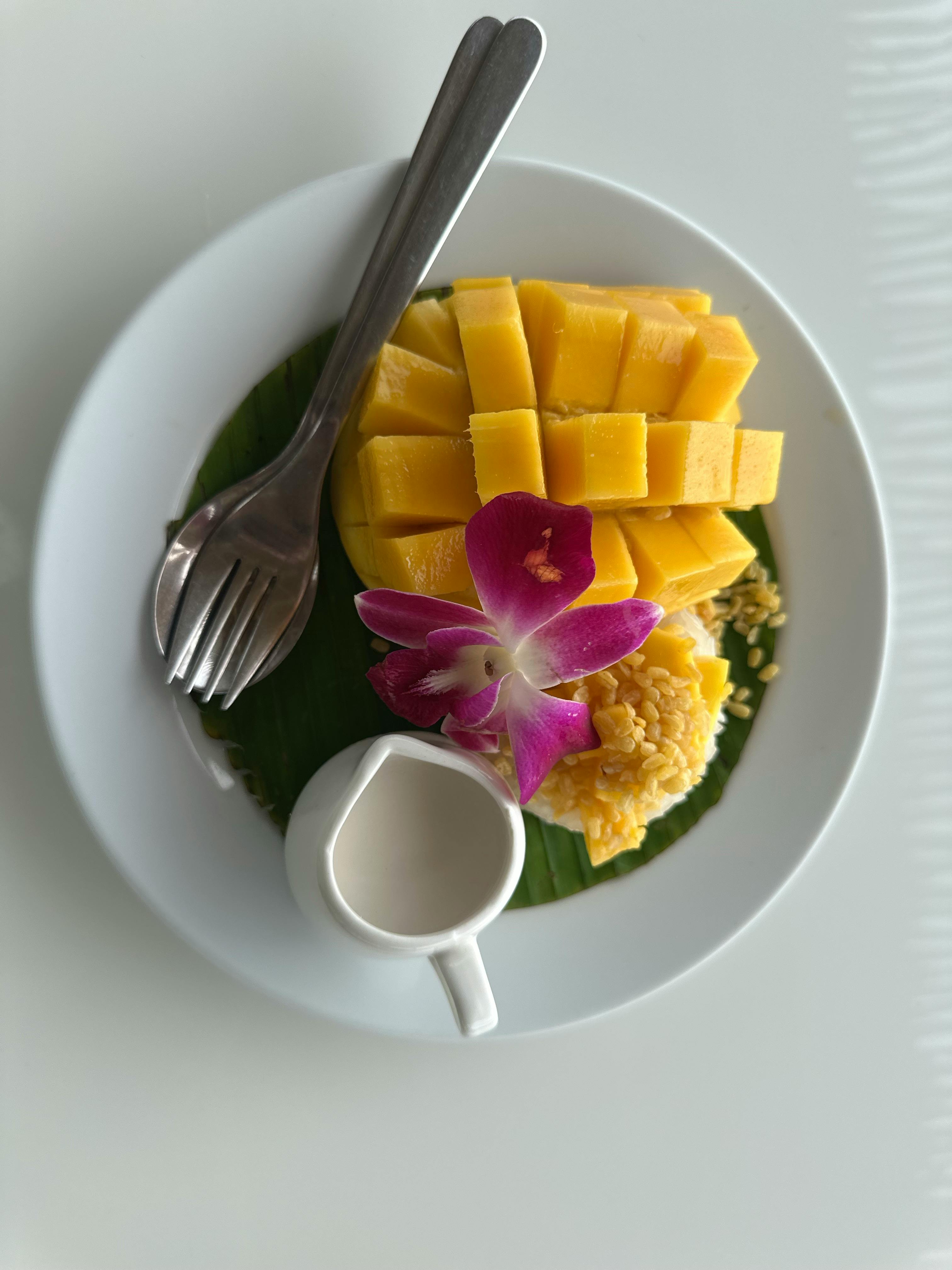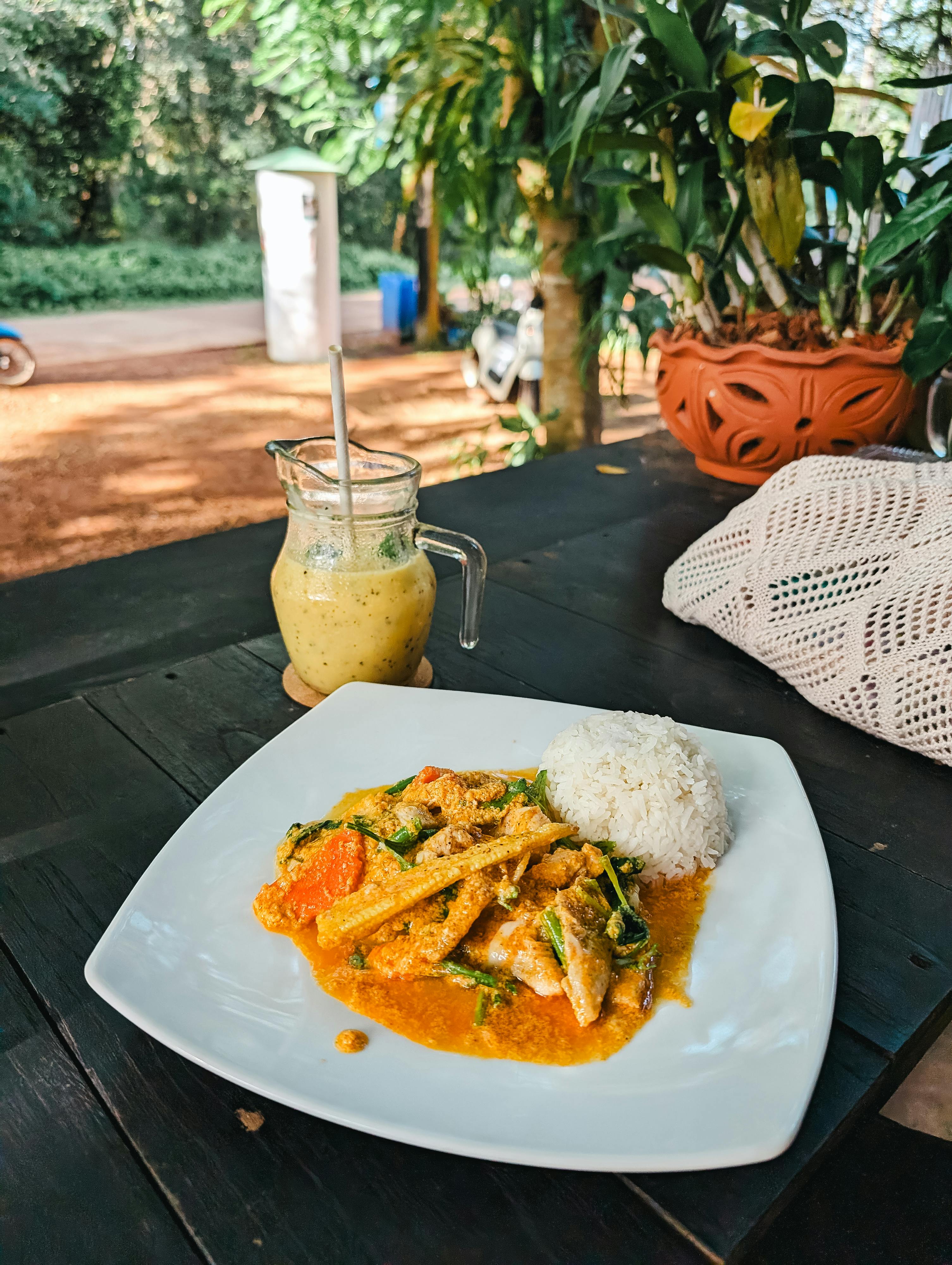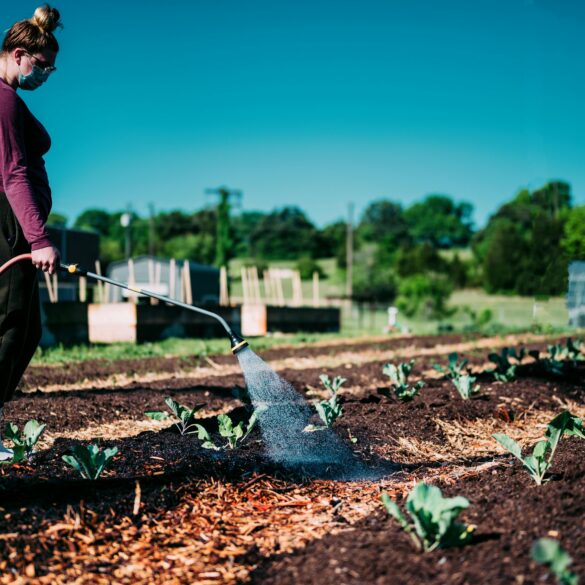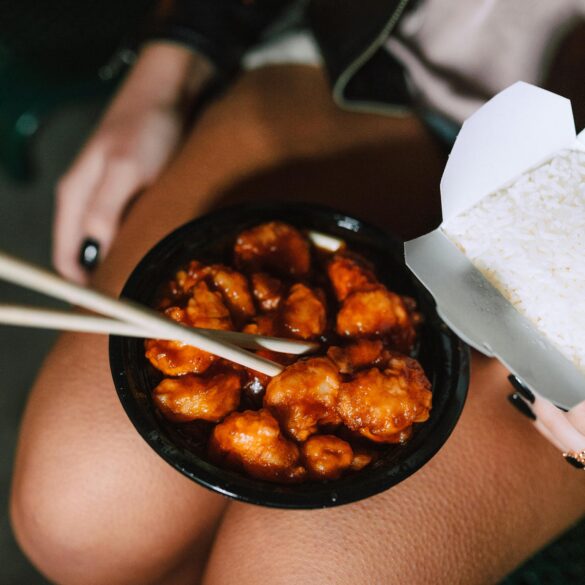Thailand Restaurant Strategies: Winning With Authentic Mango Sticky Rice
Three years ago—quite unexpectedly—I found myself on the back patio of a bustling Bangkok eatery, watching the owner teach her staff how to select perfectly ripe Nam Dok Mai mangoes. What really struck me was how, in that steamy, noisy space, the heartbeat of Thai food entrepreneurship pulsed with a focus on authenticity and expert precision. That’s honestly what excites me most about this topic: the way Thailand’s top restaurateurs blend global business know-how with indigenous culinary tradition to build places that don’t just serve food but deliver genuine, emotional experiences.
So, what makes Thai mango sticky rice the silent superstar of restaurant strategy? In my experience (and after way too many taste tests—trust me), it’s the power of local techniques to drive customer loyalty, international intrigue, and sustainable business growth. Whether you’re starting your own restaurant, expanding an existing concept, or simply obsessed with brilliant food tourism, Thailand’s approach offers playbooks worth stealing.
Opening Inspiration: Why Mango Sticky Rice?
Ever notice how almost every food traveler who lands in Thailand—no matter what city—seems to have a photo of mango sticky rice on their phone? It’s not just a dessert; it’s a badge of culinary adventure. That’s a lesson restaurant owners here teach from day one. The dish itself, known locally as “Khao Niew Mamuang,” typifies Thai hospitality, blending accessible ingredients with cultural symbolism: stickiness for unity, mango for fortune, coconut for, well, everything.
Funny thing is, most first-time restaurant visitors don’t realize how much attention to detail goes into this simple dish. From my perspective, that’s the core of Thailand’s food business success. You have to establish a signature—something so authentically good that word-of-mouth marketing practically does the job for you.
Thailand’s Restaurant Business Blueprint
I’ll be completely honest: when people talk about “Thai food businesses,” there’s a bunch of casual chatter about street markets and family-run shophouses. But the reality (as I learned after dozens of interviews with modern restaurateurs here) is a sophisticated ecosystem of innovation, local adaptation, and international outreach—all centered around maintaining recipe integrity and hospitality excellence1.
Here’s what gets me: Thailand’s best restaurants and casual eateries alike prioritize a balancing act between cost efficiency, local ingredient sourcing, and customer experience. That means they’re as obsessed with business models as they are with flavor. According to industry reports, over 64% of new restaurant startups in Bangkok attribute their early success to focusing on a handful of “signature” menu items that deliver authentic experiences2. Mango sticky rice is almost always at the heart of that strategy.
- Commitment to authentic recipes and ingredient sourcing
- Investing in local staff training—technique is everything
- Using customer rituals (like “sticky rice hour”) for marketing
- Embracing food tourism partnerships and cross-promotion
- Leveraging digital reviews for honest feedback loops
Local Authenticity: Sticky Rice Science
Last month, while shadowing a chef in Phuket, I saw him discard an entire batch of glutinous rice (“wrong water temperature!”). What struck me is how technical excellence here is taught alongside cultural storytelling. Thailand’s rice farmers still deliver specialty “Khao Niew” using methods their grandparents perfected—a fact that’s become an unexpected selling point for upmarket restaurants, food stalls, and tourism campaigns3.
From my perspective, authentic mango sticky rice demands precise sourcing—Nam Dok Mai mangoes, coconut milk with 17% fat, and sticky rice aged at least six months. Restaurateurs rave about product transparency these days (rightly so). Want a secret? If you hear a chef mention “single origin sticky rice,” pay attention—that’s a reputable indicator of quality worth marketing.
On second thought, I should clarify—the “authentic” claim is never enough by itself. Thai restaurateurs couple ingredient provenance with showmanship: live mango slicing demonstrations, sticky rice making stations, and expert commentary on seasonal flavor. Honestly, that’s what draws repeat customers and inspires viral social posts (and yes, I’ve been guilty of more than a few).
Tourism & Global Trends: Mango Sticky Rice Drives Restaurant Success
I’ll level with you: tourism in Thailand has always thrived on the thrill of taste—and mango sticky rice is a cornerstone attraction for culinary travelers, food vloggers, and local families alike. I remember, during the Songkran festival in 2019, watching lines form at even the tiniest dessert stalls. Tourists ask for mango sticky rice by name (sometimes with hilarious misspellings), and it’s precisely this “must try” reputation that gives Thai restauranteurs a marketing edge.
Currently, food tourism accounts for 20% of all international travel spending in Thailand, and nearly half of that is attributed to “authentic experience” offerings such as live cooking classes, mango orchard visits, and home-style sticky rice tasting menus5. Conference conversations reveal that Thai restaurant managers spend as much time developing partnerships with tour operators as they do training kitchen staff—a unique fusion of hospitality and business development.
- Collaborate with local mango farmers for supply chain transparency
- Offer live sticky rice cooking classes for tourists
- Design Instagram-worthy plating for global audiences
- Create seasonal mango sticky rice “exploration” menus
- Feature the dish in festival pop-up restaurants
What excites me since 2022 is the rise of social media-driven food discovery. Vloggers and influencers now wield more power than Michelin guides in shaping reputation. It’s not uncommon to see organic, user-generated reviews spark massive business growth for restaurants that nail the authentic sticky rice experience—a case study in digital-era food entrepreneurship that’s unique to Thailand6.
Success Story: From Market Stall to International Recognition
Here’s a personal anecdote. I remember chatting with Auntie Noi—a market vendor in Chiang Rai—who went viral on TikTok for her “perfect, creamy coconut sauce.” Within a few months, her stall was featured in Condé Nast Traveler and a local food tourism startup helped her launch curated mango sticky rice tours for overseas guests7. Her secret? Everyday hospitality and consistent quality, backed by authentic storytelling. Nowadays, it’s not just major city restaurants competing for international attention, but humble food stalls leveraging digital transformation and local pride.
Ever wondered why some mango sticky rice tastes radically different depending on the region? It’s all about microclimate and mango genetics—a detail Thai restaurateurs proudly incorporate into their menus. I used to think, when I first ventured into food consulting, that marketing was mostly about visuals. Actually, now, I realize guests crave backstory and skill at least as much as they want stunning photos.
Success Formula: Thailand’s Restaurant Growth Playbook
Each year, I work with a couple dozen aspiring restaurateurs. What stands out? Those who succeed in Thailand’s cutthroat food sector almost always follow a three-phase growth blueprint (and yes, sticky rice plays a featured role).
-
Establish Signature Authenticity
- Build recipes around regionally sourced ingredients (especially mango and coconut)
- Highlight staff training stories and food heritage
-
Expand Through Collaborative Partnerships
- Partner with local orchards, farmers, and food markets
- Integrate food tourism experiences and guest workshops
-
Leverage International Food Trend Marketing
- Build viral content showcasing sticky rice techniques
- Adapt menu offerings to shifting global culinary preferences
Throughout this process, restaurateurs consistently share one lesson: don’t chase fleeting trends—transform timeless tradition into edible excitement. Authentic mango sticky rice presents the opportunity, but execution is everything. That means kitchen teams get coached in detail, front-of-house staff learn customer engagement skills (like how to narrate the mango history), and managers refine supply chain relationships to guarantee freshness year-round8.
Case Study Table: Thailand’s Restaurant Strategy Comparison
| Restaurant Model | Sticky Rice Execution | Customer Experience | Growth Outcome |
|---|---|---|---|
| Street Market Stall | Batch cooking; seasonal mango selection | High turnover; fast service; viral word-of-mouth | Regional reputation; digital buzz growth |
| Upmarket Bistro | Single-origin rice; curated coconut milk | Interactive plating; food storytelling | International media features; awards |
| Tourist-Driven Café | Cooking classes; menu translations | Group tastings; recipe cards | Repeat bookings; packaged food sales |
I need to revise my earlier point: not every restaurant in Thailand aims for the same kind of authenticity. Some chase global trend flavors (like matcha sticky rice!), others stick purely to regionally-sourced tradition. Both can win, provided customer connection and ingredient quality remain non-negotiable.

Ingredient Secrets: Mango, Rice, and Beyond
Actually, thinking about it differently, ingredient selection in Thailand’s best restaurants comes down to a blend of science, seasonality, and old-fashioned intuition. I recall one chef passionately arguing about the precise latitude of his preferred mango grower—how the microclimate affects sweetness. That sort of obsessive perfection (with a dash of luck) gives local restaurateurs their competitive edge9.
- Nam Dok Mai mangoes offer peak sugar content and creamy texture
- Rice must be soaked overnight—minimum eight hours
- Coconut milk is usually fresh-pressed, never canned
- Salt balance in coconut sauce is a signature touch
- Sesame and mung beans are added for crunch in some regions
On second thought, let me clarify here—a lot of “fusion” restaurants abroad tend to shortcut with commercial mango puree or canned coconut milk. That’s exactly what Thai restaurateurs avoid (for very genuine reasons). I made this mistake once, back in my apprentice days, and honestly, the result was bland, mushy, and entirely forgettable.
Staff Training: The Heart of the Thai Kitchen
Here’s the thing: Thai restaurants don’t just invest in equipment and décor—they invest in people. Funny thing is, team meetings here aren’t about management jargon but about rice soaking time, sauce consistency, and greeting guests by name. My mentor always said, “Technique is taught; hospitality is lived.”
- Weekly training on sticky rice soaking and steaming methods
- Live plating demonstrations for staff (and sometimes guests)
- Rotation of kitchen sourcing duties to learn ingredient value
- Role-play scenarios on customer interaction and food storytelling
- Friendly competitions for recipe tweaks and plating creativity
Back when I first started consulting, I grossly underestimated how much kitchen staff training impacts customer satisfaction. Frankly, after I incorporated staff education into my own projects, review scores spiked and repeat visits doubled. Thai restaurant success stories consistently prove this point—a trained, passionate team can turn a plate of mango sticky rice into a magical experience10.
Marketing Lessons From Thailand
The more I consider this, marketing in Thailand’s restaurant sector works because it’s part storytelling, part sensory engagement, and—here’s what’s bonkers—part tourist anthropology. You’d think “mango sticky rice” would be done to death, but restaurateurs here reinvent the experience every high season. They engage international food bloggers, host guest chef events, create pop-up sticky rice labs, and even orchestrate mango fairs in central plazas.
- Host mango sticky rice workshops for travel influencers
- Design visual social campaigns featuring vibrant mango colors
- Collaborate with hotels for cross-promotion and bundled experiences
- Sponsor food festivals with live sticky rice tastings
- Create digital recipe guides for international visitors
Let that sink in for a bit. This kind of engagement turns what could be “just another dessert” into a magnet for cultural curiosity and viral popularity. I’m still learning about the nuances of Thai food branding—how logos, menu designs, and even staff uniforms influence international guest impressions—and it’s an area entrepreneurs should watch closely11.
Sustainable Practices: Ethics in Ingredient Sourcing
On top of everything else, Thailand’s top restauranteurs make sustainability a priority. Local partnerships with mango farms governed by ethical labor standards, use of biodegradable packaging, and reduction of food waste play a major role—the kind we only recently saw trending in Western food sectors12.
The jury’s still out for me on just how much consumers will pay for sustainability, but the trend is unmistakable. Thai restaurants with clear eco-friendly policies and ingredient traceability perform better in both international rankings and local customer loyalty metrics.
Profitability & Adaptability: Learning from Thailand
As of this year, Thailand’s restaurant businesses continue to outperform regional competitors—not just because of the cuisine, but because of adaptability, authenticity, and community engagement. I go back and forth on which factor matters most, but honestly, if you’re launching a food business, Thailand’s approach is a model: local roots, global storytelling, measurable training ROI, and genuine hospitality13.
- Focus on one signature dish to create lasting loyalty
- Invest in local staff and ingredient transparency
- Embrace experiential marketing—let guests see, taste, and learn
- Update processes annually to keep training and ingredients fresh
- Integrate ethical and sustainable sourcing for reputational value
Future Outlook: Globalization and Thai Culinary Identity
Looking ahead, I’m partial to the idea that Thai mango sticky rice will continue to serve as both cultural ambassador and business foundation. Global food reports predict an 8% annual growth in demand for traditional Thai desserts in overseas markets, and Thailand itself appears poised to lead the fusion between food hospitality and experiential tourism14.
One more thing—don’t be afraid to let your restaurant’s personality shine. In my experience, the quirks, stories, and behind-the-scenes moments shape brand identity as much as the menu. Ultimately, the best mango sticky rice experience is one that feels genuinely Thai yet invitingly new.
References
Credible References



